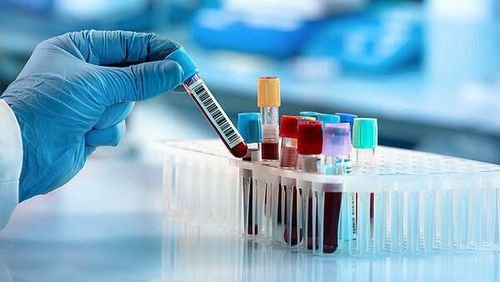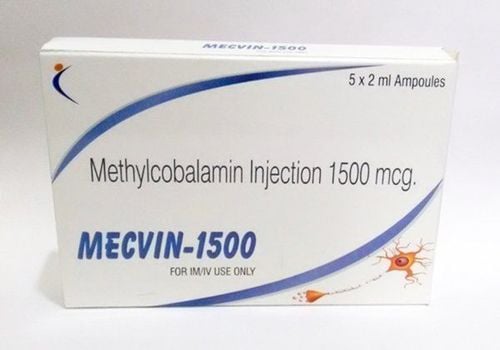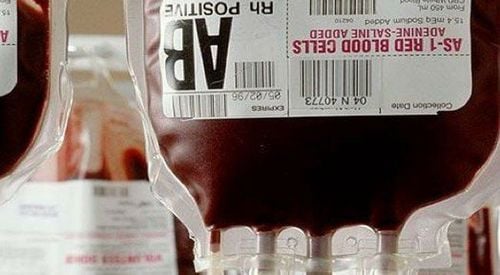The amount of blood in the human body is usually equivalent to 7% of body weight. The average amount of blood in your body is just an estimate because it depends on your weight, your gender, and even where you live.
1. How many liters of blood does the human body have?
It is estimated that there are about 5 liters of blood in the average adult human body, but this number can change depending on different factors. During pregnancy, a woman may have up to 50% more blood.
Sometimes, the amount of blood in the human body can vary depending on where you live. For instance, people living above sea level have more blood because there is less oxygen at higher altitudes.
The amount of blood in a human body will depend on their age and size. Losing a certain amount of blood will not be harmful. The amount of blood in the body compared to body weight:
- Approximately 7-8% of the body weight of an adult.
- Approximately 8-9% of the body weight of a child.
- Approximately 9-10% of the body weight of an infant.
The average amount of blood in a person is as follows:
- Infants: Full-term babies have about 75 milliliters (mL) of blood per kilogram of body weight. If an infant weighs approximately 3.6 kg, they will have about 270 mL of blood in their body.
- Children: A child weighing 36 kg will have approximately 2,650 mL of blood in their body.
- Adults: An adult having an average weight between 65 to 80 kg should have about 4.5 to 5.7 liters of blood.
- Pregnant women: To support fetal development, pregnant women typically have 30 to 50% more blood volume compared to non-pregnant women.
2. How can you measure the volume of blood in your body?
Your doctor typically will not directly measure the amount of blood you have since they can estimate it based on other tests. For example, a blood test called hemoglobin and hematocrit can estimate the volume of blood in your body relative to the fluid in your body. After that, the doctor can consider your weight and your fluid retention. All of these factors can indirectly measure the amount of blood you have.
If you have a major injury that causes blood loss, doctors will often use your weight as a starting point to estimate how much blood you have. They will then use factors such as your heart rate, blood pressure, and respiratory rate to estimate the amount of blood that may have been lost. They will also try to monitor any additional blood loss (if any) so that they can quickly replace it with a blood transfusion.
Doctors can use this test to assess numerous conditions, such as:
- Congestive heart failure.
- Kidney failure.
- Shock.
There are various methods to estimate the amount of blood, but blood volume testing typically involves injecting a small amount of a marker substance into the body. Then, a healthcare specialist will use imaging technology to follow the movement of blood throughout the body.

3. How much blood can you lose?
According to the American Red Cross, the standard amount of blood a person will donate in a single blood donation is 450ml. This is about 10% of the blood volume in the body, and you will still be safe if you lose that blood volume.
A person may feel a little bit light-headed after donating blood. As a result, blood donation centers require donors to rest for 10 to 15 minutes and drink water before leaving.
If a person is ill or has an accident, they will probably lose more blood. This can lead to shock and threaten their life.
3.1. Hypovolemic shock due to blood lost
Excessive bleeding can be dangerous. In medical terms, shock means there is not enough oxygen reaching the tissues in the body. Low oxygen levels can cause damage to the brain and other organs in our body.
If someone loses blood, the body will start to deliver blood to vital organs and will no longer supply blood to the skin, fingers, or toes. A person losing blood may begin to look pale or feel numb in their extremities. When a person loses about 15% of their blood volume, they may be in hypovolemic shock, although their blood pressure and other signs may be still normal at that time.
After losing 20-40% of their blood, that person's blood pressure will begin to drop, then they will start to feel anxious. If they lose more blood, they will begin to feel confused. Their heart rate may increase to about 120 beats per minute because the body tries to maintain blood supply to vital organs.
When humans lose 40% or more of their blood, they will experience severe shock. Their heart rate will increase to over 120 beats per minute. They may be in a coma and may lose consciousness.

3.2. Causes of bleeding that lead to shock
Bleeding can occur externally or internally, but both types can lead to shock.
- External bleeding: Head injuries or deep wounds or cuts on/near a vein, such as on the wrist or neck, can lead to severe blood loss.
- Internal bleeding: An internal injury such as a blow to the abdomen can lead to sudden and significant blood loss. However, it may not be visible from the outside. Laboratory tests can help identify the cause and location of the internal bleeding. For example, a perforated ulcer, lung cancer, or a ruptured ovarian cyst can also cause internal bleeding. Depending on the location of the internal hemorrhage, bruising may begin to appear. You may lose blood through the mouth, nose, or other openings.
3.3. Find for help
A person with severe bleeding will need medical care.
For external bleeding, the patient should:
- Sit or lie down.
- Elevate the injured body part, if possible.
- Apply pressure to the wound to slow down the bleeding, or ask someone else to do this.
Call emergency services at 115 immediately if:
- There is severe bleeding.
- Bleeding does not stop or slow down when pressure is applied.
- Severe bruising appears on the body or head.
- There is a change in consciousness or breathing problem.
3.4. Blood transfusion
Blood transfusion is a medical procedure to replenish blood for individuals who have lost blood. Reasons for needing a blood transfusion may include:
- Significant blood loss.
- Diseases that affect the amount of blood in the body, such as cancer or anemia.
Blood transfusion can be a lifesaving procedure for individuals who have lost blood. People can also receive other components of blood, such as plasma and platelets, for various treatment purposes.

4. How much blood does our body produce per day?
Your body produces about 2 million red blood cells every second. Blood cells are generated from stem cells in the bone marrow. Stem cells are a type of cell that can create other types of cells. This process occurs continuously throughout a person's life.
Blood consists of different components:
- Red blood cells transport oxygen and carbon dioxide.
- White blood cells help protect the body against diseases and infections.
- Platelets help with blood clotting.
- Plasma helps transport dissolved substances through the blood and supports the immune system.
The body takes about 24 hours to replace the lost plasma, but it can take up to 4 to 6 weeks to replace the lost red blood cells.
Red blood cells get their color from hemoglobin, which contains iron. It can take a number of months for iron concentration to return to normal after blood loss or blood donation. People who lost blood due to donation or other reasons can replenish their blood volume by:
- Drinking plenty of water.
- Consuming iron-rich foods, such as beef liver and supplementary foods.
5. How the body maintains blood concentration
The circulatory or cardiovascular system is responsible for transporting blood throughout the body. In this system, the heart pumps blood into the blood vessels, delivering it to the organs of the body. In these organs, the blood provides oxygen and other nutrients.
Other systems and organs play crucial roles in maintaining blood levels in the body, including:
- Kidneys: Regulate fluid balance in the body.
- Skeletal system: Due to the blood cells production of bone marrow.
- Nervous system: Allows other systems to complete their functions.
If there are any problems with the above systems/organs, the amount of blood in the body can be changed so that oxygen supply and a person's ability to survive are affected as a result. About 7-8% of an adult's body weight is blood. The body can easily replace a small amount of lost blood, making blood donation effortless. However, if a person loses about 15% or more of their blood volume, there may be a risk of shock. Therefore, if you notice signs of significant blood loss, either internally or externally, you should seek medical help immediately.
Furthermore, regular health check-ups are extremely important. With basic blood tests, it is possible to monitor health status as well as detect hematological disorders early. You should always be aware of any unusual symptoms that occur so that you can seek medical attention timely.
The Hematology and Cell Therapy Unit (Đơn nguyên Huyết học và Điều trị Tế bào) at Vinmec Times City International General Hospital is recognized for its specialized care in treating hematological pathologies. Established on September 3, 2019, the unit provides advanced treatments, such as chemotherapy, cell immunotherapy, stem cell transplantation, and autologous immune enhancement therapy, etc,… for patients who have benign or malignant blood disorders.
To arrange an appointment, please call HOTLINE or make your reservation directly HERE. You may also download the MyVinmec app to schedule appointments faster and manage your reservations more conveniently.
References: medicalnewstoday.com, livescience.com, healthline.com













